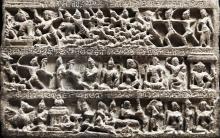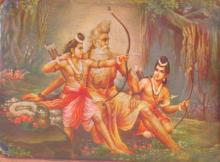Vastu
Vastu refers to the story or the plot of a play and is also referred to as itivṛtta. The vastu or itivṛtta is of two kinds – ādhikārika and prāsaṅgika.
The ādhikārika-itivṛtta refers to the main plot of the play – it is the primary story that runs through the play and is its most important thread.









